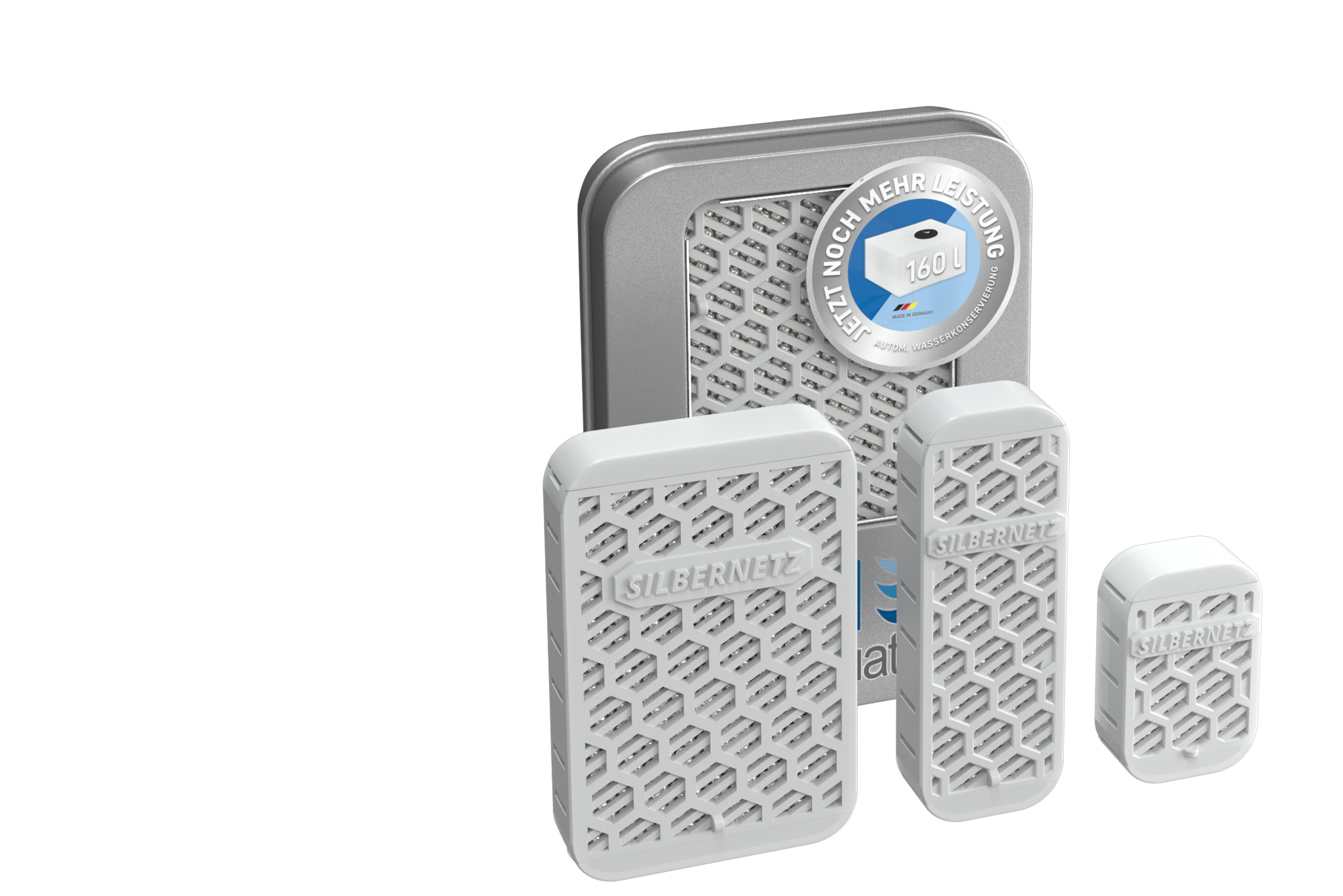SEARCH AND FIND
Search directly for a product or tag

The Silverpearls preservation technology is a coated, particulate polymer material which is silver-coated wet-chemically with a layer consisting of elemental silver, the silver being an oligodynamically active metal. The Silverpearls are used for the antimicrobial treatment and/or preservation of water. Depending on their application, they are used either in specially manufactured housings, as loose bulk material or in filter elements/filter housings specially designed for this purpose.
Silver-based products have been used to keep drinking water fresh since Charlemagne. Back then, in the form of silver vessels in which drinking water was kept, nobody knew anything about the specific effects of silver. Today we know that it is the positively charged silver ions that dock onto the microorganisms (e.g. pathogens such as Legionella, E.Coli, etc.) and disrupt the metabolism of the bacteria or lead to cell death in over 30 different mechanisms of action. The microbially acting silver ions have a unique long-term effect like no other active ingredient. Products based on chlorine or hydrogen peroxide cannot be “bound” in water, they evaporate and are therefore not suitable for preservation.
When the metallic (elemental) silver of the Silverpearls comes into contact with the oxygen-containing water/fluid, a concentration-dependent amount of Ag+ ions is formed. These formed Ag+ ions are solvated by water/fluids, pass into the fluid phase and are carried away. The positively charged Ag ions associate to the negatively polarized membranes of microorganisms. A large number of chemical reactions develop from this initially electrostatic interaction. These chemical reactions, with over 30 proven mechanisms of action of the silver ions, lead to reactions such as metabolic disorders and structural deformations in the microorganisms, which in turn lead to the inability to reproduce and even cell death:
Only the concentration of free solvated Ag+ ions acts as an antimicrobial effective concentration. The concentration of free silver ions in water and aqueous media depends to a large extent on which other substances (ions, complexing agents, etc.) are contained in which concentrations in the respective fluid. This fact is illustrated using the example of the chloride (Cl– ) ions contained in practically every natural drinking water , in accordance with the law of mass action:
c(Ag+) = 1,17x10-10/1,3c(Cl-)
If corresponding chloride concentrations (Cl– in[mg/L] or.[mmol/L] ) are used, the silver ion concentrations resulting under these concentration conditions are as follows:
| CL– [mg/l] | CL– [mol/l] | Ag+ [mol/l] | Ag+ [μg/l] |
|---|---|---|---|
| 10 | 0,28 | 4,67 | 50 |
| 20 | 0,56 | 2,33 | 25 |
| - | - | - | - |
| 60 | 1,69 | 0,77 | 8 |
| - | - | - | - |
| 100 | 2,82 | 0,46 | 5 |
| - | - | - | - |
| 200 | 5,63 | 0,23 | 2,5 |
That means that e.g. For example, in water with a chloride content of 20 mg/L, the maximum concentration is only 25 µg silver ions/L. It has been proven that one
effective concentration >5µg Ag+ /L with an exposure time of approx. 2 hours causes a kill rate of (4 … 6) log levels and thus ensures effective long-term protection.
Silverpearls have, protected from sunlight and
stored closed, a shelf life of 10 years. In contact with water/fluids, the shelf life or period of use depends on the respective application and is usually between 12 and 24 months.
H410: Very toxic for water organisms with long-term effect.
Signal word: Attention
Use biocides safely. Always read the label and product information before use.
Active substance: silver (Ag+ )
BauA reg. No. N-72324
CAS No.: 7440-22-4